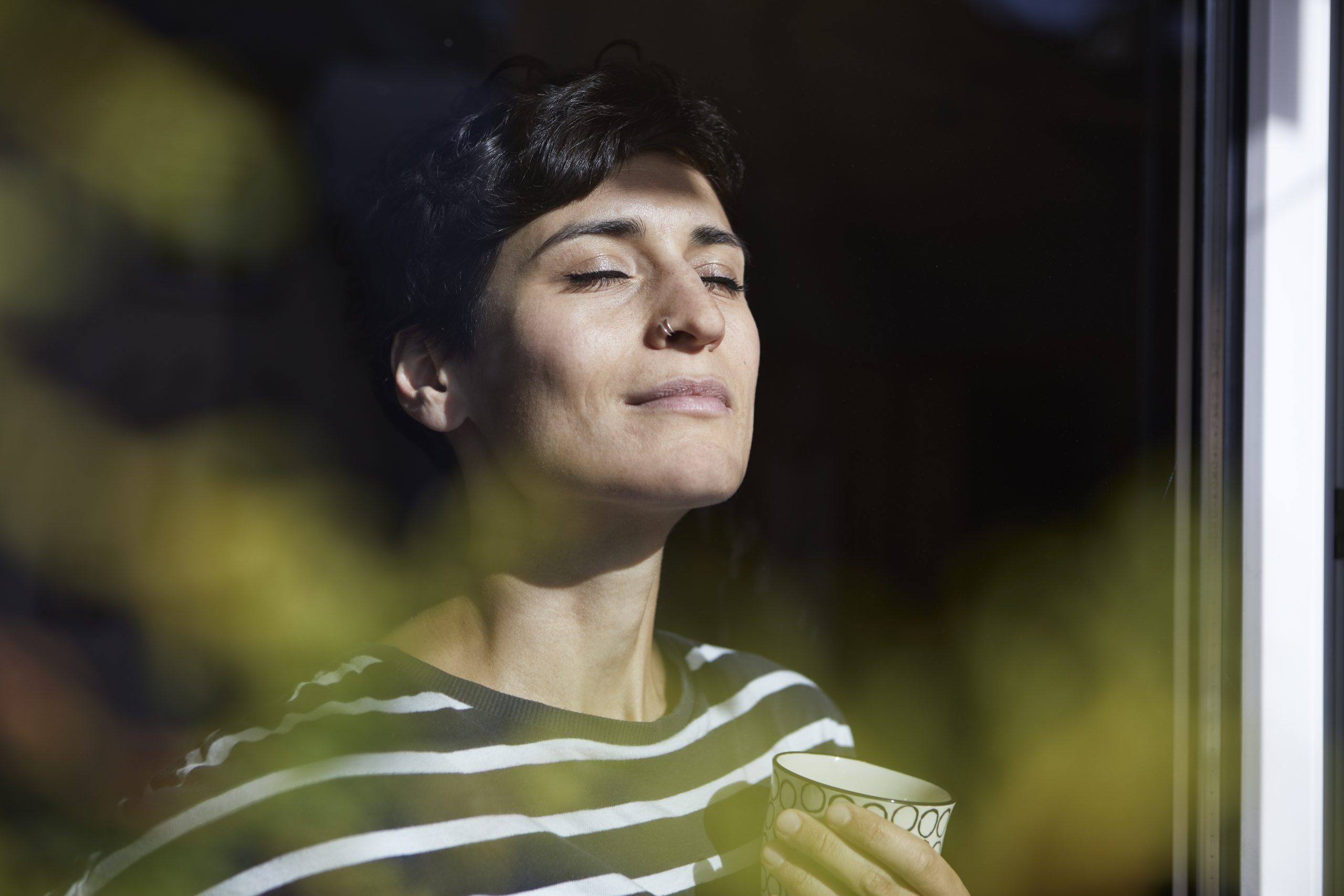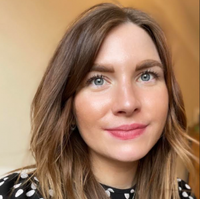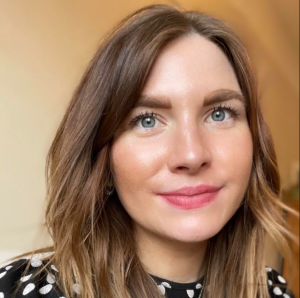Breathing exercises for anxiety for adults and kids to try at home


Breathing exercises for anxiety can go some way to help both adults and children create calm in any situation.
It's just one of the many natural anxiety remedies out there, but it doesn't require any input from anything or anyone else. These exercises can help on the spot to calm nervousness and help sufferers focus on what's going on without that restless and tense feeling.
Anxiety and feeling overwhelmed can present itself as rapid breathing, tightness in the chest, shaking and nausea. Restlessness and feelings of danger, panic and dread are also common, as is insomnia, problems falling asleep and unpleasant, vivid dreams.
"It doesn’t matter who you are, you will sample anxiety at some point in your life," says anxiety expert, Karl Rollison. "The cause could be an intense, negative situation like the sudden death of a loved one, or it could be a combination of negatives happening in succession like job loss, relationship issues and financial woes."
Research has also shown that anxiety has many causes. "These include over-activity of the brain which leads to a chemical imbalance and this could result in anxiety," says registered psychologist Dr Juliet Anton. "Another cause is a family history which could increase the chances of us experiencing anxiety ourselves." The third cause of anxiety is when individuals have a history of stressful and/or traumatic experiences in the past which leads them to feel anxious about what could happen in the future.
Naturally, breathing exercises for anxiety are not going to be the go-to method of treating the condition if you have a generalised anxiety disorder. If you find that anxiety is a frequent and debilitating feature of your life, it's best to make an appointment with your GP who will be able to give more information.
Here, our experts explain what anxiety actually is, what causes it and provide easy-to-follow breathing exercises for anxiety that both you and your kids can try at home.
Parenting advice, hot topics, best buys and family finance tips delivered straight to your inbox.
10 of the best breathing exercises for anxiety to try
1. Abdomen breathing
How to practice abdomen breathing exercises for anxiety at home:
- 'Sit down and get comfy, don’t do this standing up,' says Karl.
- 'Place each hand either side of the bottom of the ribs, as you breathe in imagine you are breathing in through your hands as well as your mouth.' Notice how much deeper you can breathe.
- 'Now, breathe in for the count of 4. Really fill the lungs,' says Karl. 'When you have filled them as much as possible take another breath in, if you do this right you should suddenly be very aware of your stomach.'
- Pause. 'Then breathe out for the count of 12. Really empty the lungs. You should be bent forward. Now breathe out a bit more,' says Karl.
- Pause then breathe in again. 'Keep repeating: breathe in quick and deep, pause, breathe out long and slow, pause,' says Karl. 'As you do this you will suddenly feel a positive shift. Stop if you get dizzy.'
2. Breathe focus

When deep breathing is focused and slow, it can help reduce anxiety. You can do this exercise by sitting or lying down in a quiet, comfortable space.
- Notice how it feels when you inhale and exhale normally. Mentally scan your body. You might feel tension in your body that you weren't aware of.
- Inhale slowly and deeply through your nose.
- Notice your belly and upper body expanding.
- Exhale however is most comfortable for you.
- Do this for several minutes, paying attention to the rise and fall of your stomach.
- Choose a word to focus on and vocalise during your exhale. Words like “safe” and “calm” can be effective.
- Imagine your inhale washing over you like a gentle wave.
- Imagine your exhale taking negative and upsetting thoughts and energy away from you.
- When you get distracted, gently focus your attention back to your breath and your words.
Practice this technique for up to 20 minutes daily when you can.
3. Equal breathing
This means you’re inhaling for the same amount of time as you’re exhaling.
You can practice equal breathing from a sitting or lying-down position. Whichever position you choose, be sure to get comfortable.
- Shut your eyes and pay attention to the way you normally breathe for several breaths.
- Then, slowly count 1-2-3-4 as you inhale through your nose.
- Exhale for the same four-second count.
- As you inhale and exhale, be mindful of the feelings of fullness and emptiness in your lungs.
4. Resonant breathing
Resonant breathing, also called coherent breathing, can help you calm anxiety and get into a relaxed state.
- Lie down and close your eyes.
- Gently breathe in through your nose, mouth closed, for a count of six seconds.
- Don’t fill your lungs too full of air.
- Exhale for six seconds, allowing your breath to leave your body slowly and gently. Don’t force it.
- Continue for up to 10 minutes.
- Take a few additional minutes to be still and focus on how your body feels.
5. Lion's breath

How to practice the 'Lion's Breath' breathing exercise for anxiety at home:
- Get into a kneeling position, crossing your ankles and resting your bottom on your feet. If this position isn’t comfortable, you can sit cross-legged.
- Bring your hands to your knees, stretching out your arms and your fingers.
- Take a breath in through your nose.
- Breathe out through your mouth, allowing yourself to vocalise “ha.”
- During exhale, open your mouth as wide as you can and stick your tongue out, stretching it down toward your chin as far as it will go.
- Focus on the middle of your forehead (third eye) or the end of your nose while exhaling.
- Relax your face as you inhale again.
- Repeat the practice up to six times, changing the cross of your ankles when you reach the halfway point.
6. Guided meditation
You can practice guided meditation by sitting or lying in a cool, dark, comfortable place and relaxing. Then, listen to calming recordings while relaxing your body and steadying your breathing.
Guided meditation recordings help take you through the steps of visualising a calmer, less stressed reality, and help you gain control over intrusive thoughts that trigger your anxiety.
Breathing exercises for anxiety for kids
Children can also experience anxiety. This may be about school, meeting new people or doing things alone for the first time. According to the NHS, severe anxiety can harm a child's mental health and emotional wellbeing, affecting their self-esteem and confidence, just as it can with adults. This may cause them to withdraw and avoid situations that make them feel worse- such as not wanting to go to school and friends' parties- meaning they miss out on experiences important not only for their intellectual growth but for their wellbeing too.
There are a variety of breathing exercises you can teach your child so they can use them when they're feeling overwhelmed and you're not there.
So what are they?
7. Feather breathing
How to try the feather breathing exercise for anxiety with kids at home:
- Collect different coloured feathers with your child.
- Ask your child to hold the feather in their hand.
- Take a deep breath (show your child how to do this)- you can help them learn how to take a deep breath by asking them to put their hands on their bellies and feel the rise and fall.
- Inhale slowly for a count of 3.
- Then, slowly exhale through the nose and while exhaling blow gently up one side of the feather and down the other side.
8. Flower breathing
Similar to feather breathing, the flower breathing exercise lets your child focus on something tangible to help instil a sense of calm.
- Collect a flower, or have your child visualise their favourite flower.
- Then ask your child to breathe in deeply, while doing so take a BIG whiff of the flower’s scent.
- Now hold your breath for a count of 3.
- Exhale through your mouth for a count of 4.
- Repeat for five minutes.
9. Breathing buddies
This one is great for toddlers and preschoolers
- Ask your child to lie down and put their favourite teddy on their tummy.
- Ask them to inhale deeply for a count of 3.
- Then, ask them to exhale for a count of 4.
- Prompt them to watch the teddy rise and fall as they breathe in and out.
- Do 5 to 10 rounds.
10. Shapes breathing

Trace each of the shapes five times with your finger as you breathe.
- Trace the edge of the shape and count, 1, 2, 3, 4
- Pause
- On the exhale, trace the other side of the shape, exhale for 1, 2, 3, 4
- Pause
- Repeat on for the next half of the shape.
- Trace the shape for a total of three times using this technique.
Why do breathing exercises help with anxiety?
The great thing about breathing exercises for anxiety is that they can be employed anywhere at any time. They’re free, non-addictive and have zero side effects.
"Most of our automatic bodily functions that are outside of our awareness like our heart rate, blood pressure, digestion and urination are controlled by our Autonomic Nervous System (ANS)," says Karl. "This system also controls two subsystems, one is ‘fight or flight’ the other is ‘rest and digest.’'
Imagine they are opposite ends of a seesaw. When we experience stress our ‘fight or flight’ system is activated. "As mentioned, we breathe in longer and harder than we breathe out in order to oxygenate our muscles ready for action,' says Karl, 'when this happens we produce the stress hormone cortisol." When we relax, ‘rest and digest’ is engaged and we produce oxytocin which is known as the ‘love hormone’.
"Cortisol and oxytocin have a symbiotic relationship - as one end or the seesaw goes up the other comes down," says Karl. "So the first thing is to acknowledge that, although ‘fight or flight’ is controlled by our ANS, WE can step in and take control back."
We do this by wilfully stepping up the production of oxytocin to help us relax. Remember, as this side of the seesaw goes up the cortisol end goes down. "There are loads of ways to do this including meditation, exercise, listening to music, hugging a loved one or caressing the skin," says Karl. "However, the easiest and most convenient way that can be done anywhere, at any time is to shift our breathing patterns. When we breathe out longer and harder than we breathe in we bring ‘rest and digest’ online."
What does the research say?
In a 2018 study from Trinity College Institute of Neuroscience and the Global Brain Health Institute, they found that there is a neurological link between respiration and focus. The study showed that those who incorporated intentional and consistent breathing exercises for anxiety affected the levels of noradrenaline in their brain. This is a natural chemical messenger released when we are challenged, focused, or emotionally aroused. When we are stressed, we produce too much, and when we are sluggish, we produce too little; those who practiced daily breathing exercises for anxiety produced the sweet spot of noradrenaline and showed improved ability to focus.
What is the 7/11 breathing exercise for anxiety?
This is called 7/11 breathing, because you breathe in for a count of 7 and out for 11, it also sounds like shop opening hours, making it easier to remember. If you find that breathing for that long isn’t possible, it doesn’t matter. As long as your out breath is much longer than your in breath, it will still work.
- Aim your breath deep into your stomach. Do check you're doing it properly, it can be useful to place your hands on your stomach, so you can feel it getting bigger as you breathe in.
- Next, allow your lungs to empty, then breathe deeply into your stomach while counting to 7.
- Once you reach 7, breathe out gently to the count of 11, so that the out breath is much longer.
- Repeat this for 2 to 3 minutes or until you feel calm and relaxed.
https://www.youtube.com/watch?v=lszsXjozezU
What is the 4 7 8 breathing technique?
The 478 exercise is said to make you fall asleep in as little as one minute, and is said to promote a better night’s sleep, with just 5 steps and can be done anywhere and everywhere. Based on an ancient Indian practice, Pranayama, which stands for “regulation of breath” the exercise, eases the body into a state of relaxation and calmness.
- Make a whoosh sound by exhaling completely through your mouth.
- Now, close your mouth and quietly inhale through your nose, counting in your head to 4.
- Hold your breath for 7 seconds
- Exhale by making a whoosh sound again, do this for a count of 8.
- Repeat this cycle another 3 times, so in total for 4 breaths.
https://www.youtube.com/watch?v=1Dv-ldGLnIY
Can breathing exercises help with sleep?
According to stress.org, breathing exercises can be really useful for helping us unwind and remain calm during our bedtime routines. It is also cheap and readily available, and there lots of different methods out there. As mentioned above, the 4 7 8 method is particularly helpful for aiding a restful night's sleep.
The body scanning technique
Body scan meditation is another way to release tension before bed, that you may not even be aware of, but is affecting your ability to rest. This technique requires you to focus on different parts of the body and bodily sensations in a gradual sequence from head to toe.
1. Lie down in bed and focus on relaxing as you exhale.
2. Feel the bed underneath you and how it is supporting you as you continue to exhale and relax.
3. Visualise each part of your body, starting at your head and moving through your whole body to look for spots that feel tense. As you move through your body, exhale and focus on relaxing tense muscles.
4. After you've finished looking for tension throughout your body, focus on your exhales. As you exhale, repeat a mantra to yourself that helps to induce sleep such as simply the word "sleep" or another cue that helps you to start to drift off.
Repeat this daily and you should start to feel the benefits!
Rose Goodman joined Future Publishing in 2020 and writes across Goodto.com, Woman & Home, Woman, Chat and Woman’s Own magazines. Prior to pursuing her career as a writer, Rose obtained a degree in psychology and went on to work in adult mental health for five years at Addenbrooke’s Hospital, Cambridge, specialising in eating disorders. She is fully trained in first aid, medical emergency response and motivational interviewing – a directive, patient-style counselling approach to address ambivalence in recovery. She graduated with a MA in creative writing from the University of Brighton in 2017. In her spare time she enjoys writing poetry and attending literary events, and offers weekly support to those living with homelessness. Rose has a passion for raising awareness around mental illness and the importance of prioritising our wellbeing.
